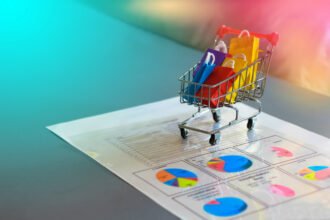Retailers are struggling to keep up with a growing demand for online purchases. They have found that the pandemic has completely upended their business models, as customers shift towards online commerce. This has driven many companies to find more innovative ecommerce marketing models that rely on big data.
As such, retailers have an even tougher job of keeping on top of supply and demand. However, thankfully, technological tools can make a big difference in this arena. Using big data and analytics, retailers can more easily optimize their supply chains. Here’s what you need to know to improve operations using this tech.
Manage Deliveries in Real-Time
As a retailer, a crucial element of doing business and making a profit is receiving supplies as soon as possible and ensuring goods get delivered to stores or customers quickly, too. Big data helps with this by enabling you to manage deliveries in real time, which is key to supply chain management.
Use up-to-date information to learn about traffic and weather conditions, for example, and the location of transport carriers. In turn, you’ll get a clear picture of when exactly deliveries will arrive. This is particularly beneficial for retailers who move perishable goods that need to arrive on time or express-ordered products that customers expect to receive ASAP.
Utilize RFID tracking sensors placed on packages to get updates and speed up inventory management processes. When deliveries arrive, RFID readers can then scan whole boxes at once to check that everything is as ordered, enabling the unloading of stock right away.
Better Order Picking Times
Another vital component of many retail businesses is picking and packing orders. This is traditionally a labor-intensive process that, in the past, only the largest retailers could expedite with automated robotic picking mechanisms or an influx of staff. Today, though, even small retailers can improve their processes and enjoy better order picking times thanks to big data.
Take information from various sources, such as warehouse layout, product inventory, order details, and past picking times, and input these details into analysis programs. Based on the rules you define, big data solutions can calculate and simulate options to determine the optimal picking process. Tweak different settings and parameters to test guidelines, then roll these out to your warehouse team and store employees. Over the long term, this can add up to significant time savings and increased customer satisfaction.
Segmented Supply Chains
Today, consumers expect more personalized shopping and customer service options than ever before. Retailers can better cater to diverse target markets and increase conversion rates by segmenting supply chains with data. Personalize what you offer to shoppers by noting what data analysis tells you about the interactions your business has had with them across various channels (e.g., web, mobile, and social).
Segments might relate to hobbies, values, locations, age groups, price consciousness, or other factors. Breaking things down like this should increase overall revenue and profitability, as you’ll be more likely to turn leads into buyers and buyers into returning shoppers.
Improved Vendor Management
You likely work with multiple companies in your supply chain. There might be direct and drop-ship vendors, logistics vendors, packaging vendors, and others – much to organize, manage, and review. Trying to improve profitability and reliability can be challenging, in turn.
However, big data can assist. Analytics solutions can compare actual vendor performance against your key performance indicators (KPIs). Programs can help you see which suppliers lag behind on things like on-time deliveries, customer satisfaction, and breakages.
Integrate big data programs with vendor systems, financial inputs (such as cost of each good), and social network feeds related to customer feedback, especially complaints. Set up reports and alerts to generate automatically if KPIs slip below a pre-determined range or if data changes significantly in some other way. Let vendors know about these systems and keep them on their toes. This tracking, analysis, and review will help you to improve customer service and business profitability.
Better Planning
Big data can also help you forecast trends by examining demographic data and economic indicators for clues. “Sentiment analysis,” where machine learning algorithms mine data to determine consumer behavior and interest in context, will also help you predict top-performing products, so you’re less likely to run out of popular stock.
Once, we had to spend hours poring over documents and guessing likely outcomes. Today, we have big data to handle this work for us. You can use reams of information in numerous ways to improve your retail supply chain, so why not start taking advantage of this technology right away?








